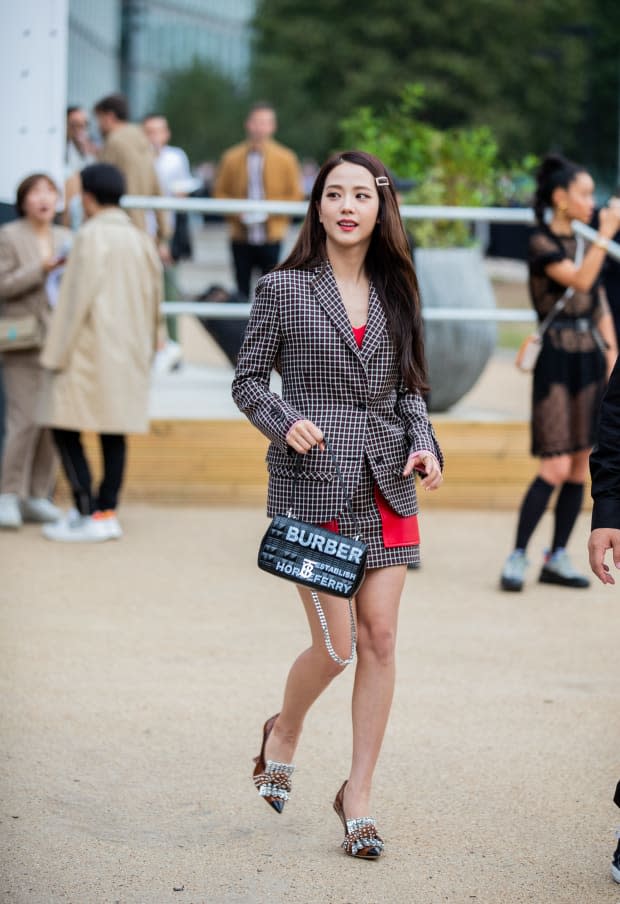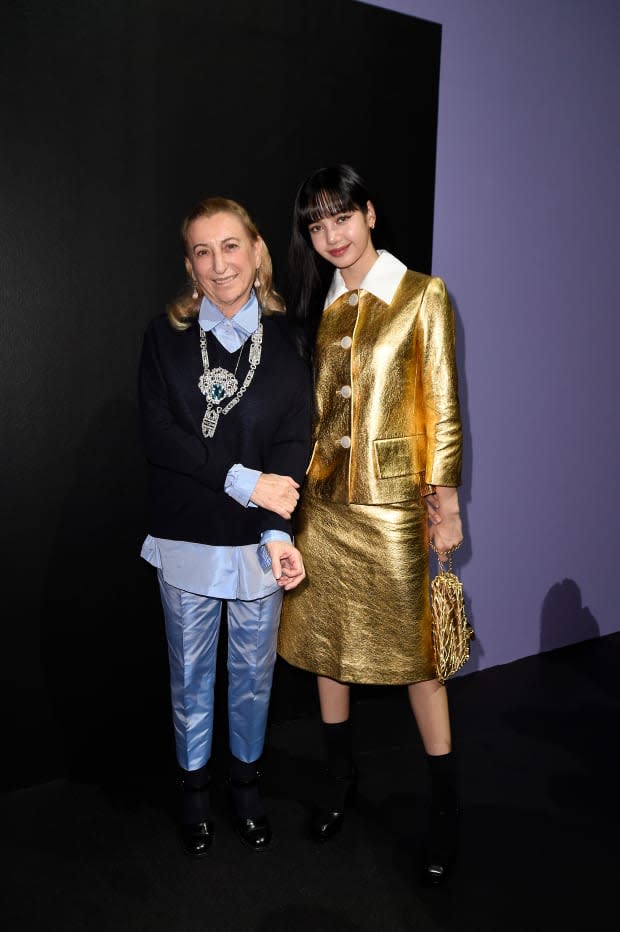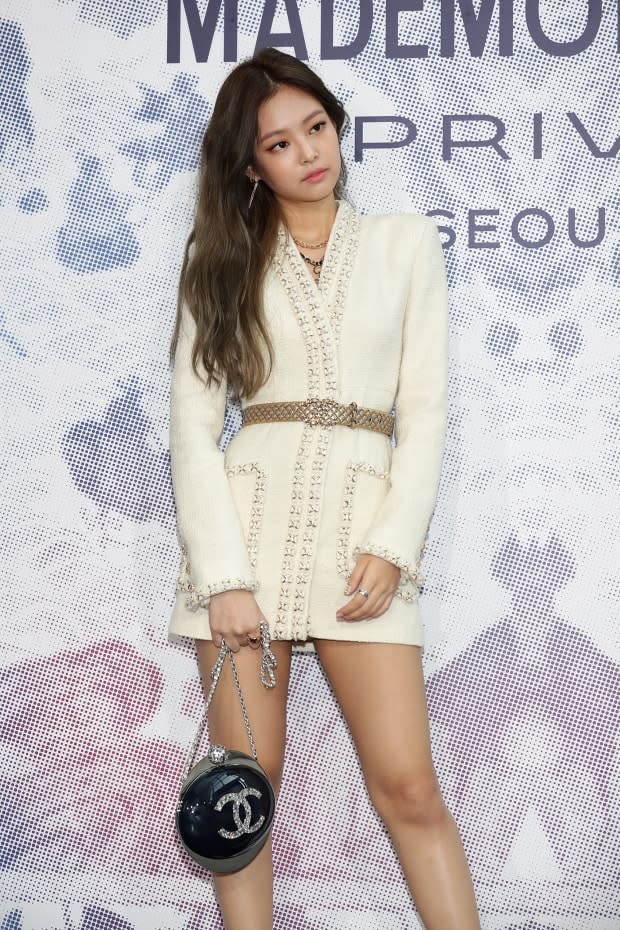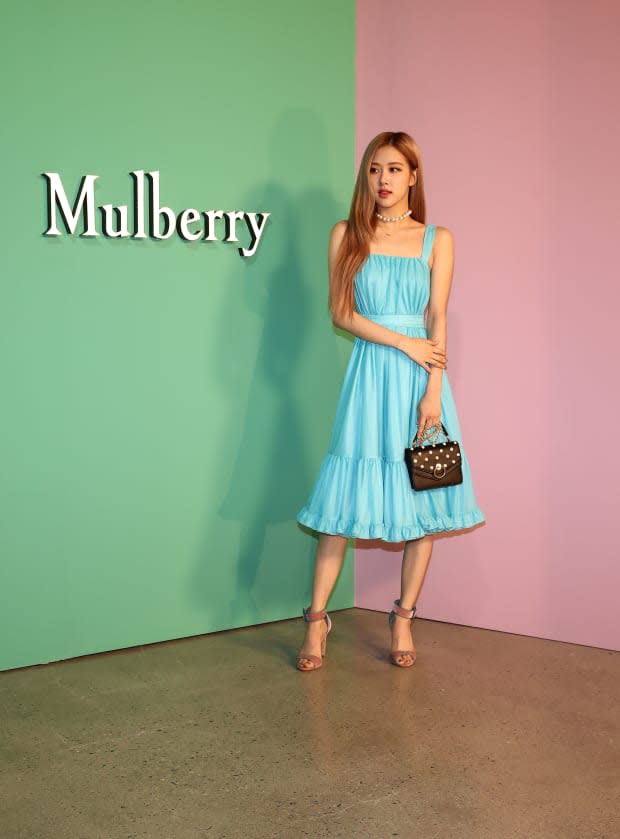What's in Blackpink's Almighty Secret Style Sauce?
The chart-topping girl group has their pick of the high-fashion litter. But dressing them isn't quite so simple.
Taylor Glasby fell into K-pop much like Alice climbed into the rabbit hole. Drowsy on the riverbank, the protagonist grew transfixed by a kind of extrasensory delight, and in spades. Glasby, meanwhile, came into the musical genre in the midst of an already-accomplished career in music journalism, when she found her standard beats just weren't cutting it like they used to.
"I'd grown up loving pop music, especially performance-lead artists like Prince and Madonna, before shifting into a rock and indie space," the London-based journalist says. "Around 2010, 2011, I'd burned out on covering those genres and was looking for something to get me excited about music again."
Enter K-pop, the rabbit hole in which the world seemed to shine a little bit brighter. She was hooked instantly.
"It was everything I'd loved about U.S. pop, but amplified — bigger colors, bigger videos, bigger groups and more intricate songs," she remembers. "Over the past decade, K-pop has refined itself into a genius work of art, from the way groups visually embody their creative concepts to the immaculate choreography and song production. It's impossible to get bored."
"K-pop," short for "Korean pop," is a genre of popular music originating in South Korea, with rich, vivid origins that can be traced all the way back to the late 19th century. But K-pop didn't begin taking form as the contemporary music force we know today until the 1990s — April 11, 1992, in fact, on which date a hip-hop group named Seo Taiji and Boys appeared on a televised South Korean talent show. Today, K-pop comes complete with fandoms so colossal, so engaged, they can take down an entire presidential campaign rally if they want to.

K-pop doesn't have stars — it has "idols," who serve as a part of a K-pop group or perform as a solo act. A hyper-curated personal image is a crucial piece of the idol machine, but it's not everything: There's also often intensive training across dance, vocals and foreign language — all of which ladders up to a visual experience that's an undeniably sparkly feast for the eyes.
"K-pop is incredibly visual, and groups really are associated with particular styles and looks," Glasby explains. In 2020, this extends to particular fashion brands by proxy. "It's a misconception that idol groups are these uniform teams working like a hive mind," Glasby adds. "Personalities are half the draw in K-pop, and dressing them to fit their personality while still blending as a group is a tricky but rewarding endeavor."
Chart-topping girl group Blackpink is, perhaps, the best case study on how they're able to utilize fashion to build up their profiles as an act while still furthering themselves as individuals. Each of its four members — best known by the mononyms Jisoo, Jennie, Rosé and Lisa — have inked blue-chip partnerships with four separate, visually disparate houses: Dior, Chanel, Saint Laurent and Celine, respectively. In the big, bold K-pop cult of personality, the sum of each group's aesthetic parts are not always greater than its whole. And while incredibly powerful, that philosophy is not always so easy to dress.
Related Articles:
Female Rappers Have Been Influencing Fashion for Decades
The Charming, Familiar History of Boy Band Style
Samantha Burkhart Is the Woman Behind Music's Most Delightful Capital-F Fashion
K-pop itself is one part of a larger whole, too: That's "Hallyu," or the Korean wave, a trend Vox defines as "the idea that South Korean pop culture has grown in prominence to become a major driver of global culture." Hallyu, viewed as both an economic and cultural asset, encompasses everything from the estimated $13-billion Korean beauty market to the international success of the Korean film industry. (The latter, smartly, is informally referred to as "Hallyuwood.")

That Hallyu and K-pop began its "global sea swell" at precisely the same time — the early 1990s — is not a coincidence. By the early 2010s, when Glasby first began getting into K-pop, the genre had already been surging for nearly 20 years, and it had a more or less airtight aesthetic to show for it.
"At the turn of the decade, its fashion, for me, was about very meticulously coordinated looks, using clothes to illustrate concepts and make the video really captivating, rather than flexing luxury brands," Glasby says, referencing the larger-the-life looks that nine-member boy band EXO wore in its early days. In the music video for "Mama," EXO's debut studio EP released in 2012, the group toggles between head-to-toe metallics, studded leather and at one point, floor-length, hooded shawls. At press time, that video had 88 million views, and counting, on YouTube.
"The outlandish stage clothes were so over-the-top compared to what was happening in the West that it increased the sense of uniqueness I attributed to K-pop, which is what had drawn me to it in the first place," she continues. "Much of it was so out there that you wouldn't see a full look on a fan walking down the street, but there was plenty that trickled down such as hair styles, makeup, accessories and singular pieces."
That began to change, though, as K-pop began growing more popular — and more lucrative — first outside South Korea, then outside Asia. The idols' looks became more sophisticated and envelope-pushing, too.
Glasby recalls Kwon Ji-yong, a South Korean rapper, singer-songwriter and record producer a.k.a. G-Dragon who is often called the "King of K-Pop." As one of the genre's earliest fashion pioneers, the performer has widely ignored gendered clothing, with a wardrobe that often fuses Chanel bouclé jackets and Thom Browne suiting with "chunky, ostentatious streetwear" and his own fashion brand, Peaceminusone.
Which, then, is where Blackpink comes in.
As the highest-charting all-female K-pop act on the Billboard Hot 100, there's no question the idol group has star power as a unit. Blackpink's music videos have broken three and set two Guinness World Records, including for the most-viewed YouTube video in a 24-hour window; this past October, they became only the third K-pop group to ever hit number-one on Billboard's Artist 100 Chart. That is because, yes, their music is delicious, the sort of syrupy-sweet earworms that are crafted for the express purpose of doling out dopamine — but it is also because they are very, very good at playing the game.

"Idol groups aren't amorphic," Glasby says. "To capture and share each member's personality through specific brands and looks is important. The overall goal is to always have a harmonious appearance even when members are dressed to express their individual tastes."
And the foursome is dressed. Together, Kim Ji-soo (Jisoo), Jennie Kim (Jennie), Rosé (Roseanne Park) and Lalisa Manoban (Lisa) have served as global ambassadors for such brands as Dior, Cartier, Chanel, Saint Laurent, Celine, MAC and Bulgari. They're consistent front-row fixtures at fashion week, no matter the season or city — be it Lisa in head-to-toe gold leather at Prada or Jisoo in a checked skirt suit at Burberry. And their music videos are, predictably, a sumptuous, no-expenses-spared toast to all of it. (Their "How You Like That" clip, released this June, watches something like the Vogue Runway homepage at the end of Paris Fashion Week, with Alexander McQueen, Off-White and Marine Serre all well-represented.)
"Each of those brands have their own story, their own narratives," Nwaka Onwusa, chief curator and vice president of curatorial affairs for the Rock & Roll Hall of Fame, says. "It's a really powerful visual, that they're able to bring that level of fantasy that's typically isolated on the runway into their music videos."
This is much to the credit of stylist and handbag designer Choi Kyoung Won, who has been working with Blackpink since the group was formed in 2016. Her role is an invaluable one: "Korean stylists are worth their weight in gold for their connections to brands," Glasby says. "Stylists know their idols and they know their brands, it's their job to match them up correctly while making them look great."
In a 2018 interview with WWD, Won explained that it's her vision for the act — and for Jisoo, Jennie, Rosé and Lisa, individually — to be at "the epitome of women's fashion in South Korea, to create a new milestone." So far, it seems, Won is well on her way. But for Blackpink, as with any celebrity entity, such high-profile fashion partnerships don't just beget fame: They're also fantastically valuable PR, not to mention a likely-cushy monetary stream between releases.
Still, "these sponsorships go beyond a paycheck," Coco Romack, managing editor of MTV News, tells me. "For an artist between tours and album releases, they also bring artists a lot of visibility."

YG Entertainment, the entertainment company to which Blackpink is signed, announced in June that solo tracks are planned for Jisoo, Rosé and Lisa; Jennie, meanwhile, had already released her own solo single back in November 2018. With the group maybe, just maybe, becoming a springboard for a spate of solo careers, it's a sure thing that fashion will follow each idol wherever they may lead.
"Luxury fashion groups have had their eyes firmly focused on Asian countries for years, and Asian artists have constantly worked, in Asia, with them," Glasby says. (Indeed, Greater China alone is projected to overtake the U.S. as the largest global fashion market by 2023, per a 2020 forecast by research firm GlobalData.) "For the brands, it's no-brainer to partner with someone whose very dedicated fanbase frequently purchases the products their idol wears and uses."
As ever, the numbers don't lie: In a 2019 The Wall Street Journal report, online shopping platform Lyst revealed global searches for Celine's Triomphe crossbody surged 66% on June 28, the same day Lisa Instagrammed the bag; that May, during the three days after Dior announced its plans to dress BTS on tour, search interest for the house climbed 420%.
At its heart, K-pop is — and always will be — rooted in these kinds of fantastical, sensory experiences that other musical genres just aren't able to imitate (and that won over fans like Glasby in the first place). "It's not just a vibe you're digging," Onwusa says. "Aside from the music being so positive, which I love, it's making a mark and doing so in such a unique way that we haven't really seen. The energy, it definitely translates."
Never miss the latest fashion industry news. Sign up for the Fashionista daily newsletter.